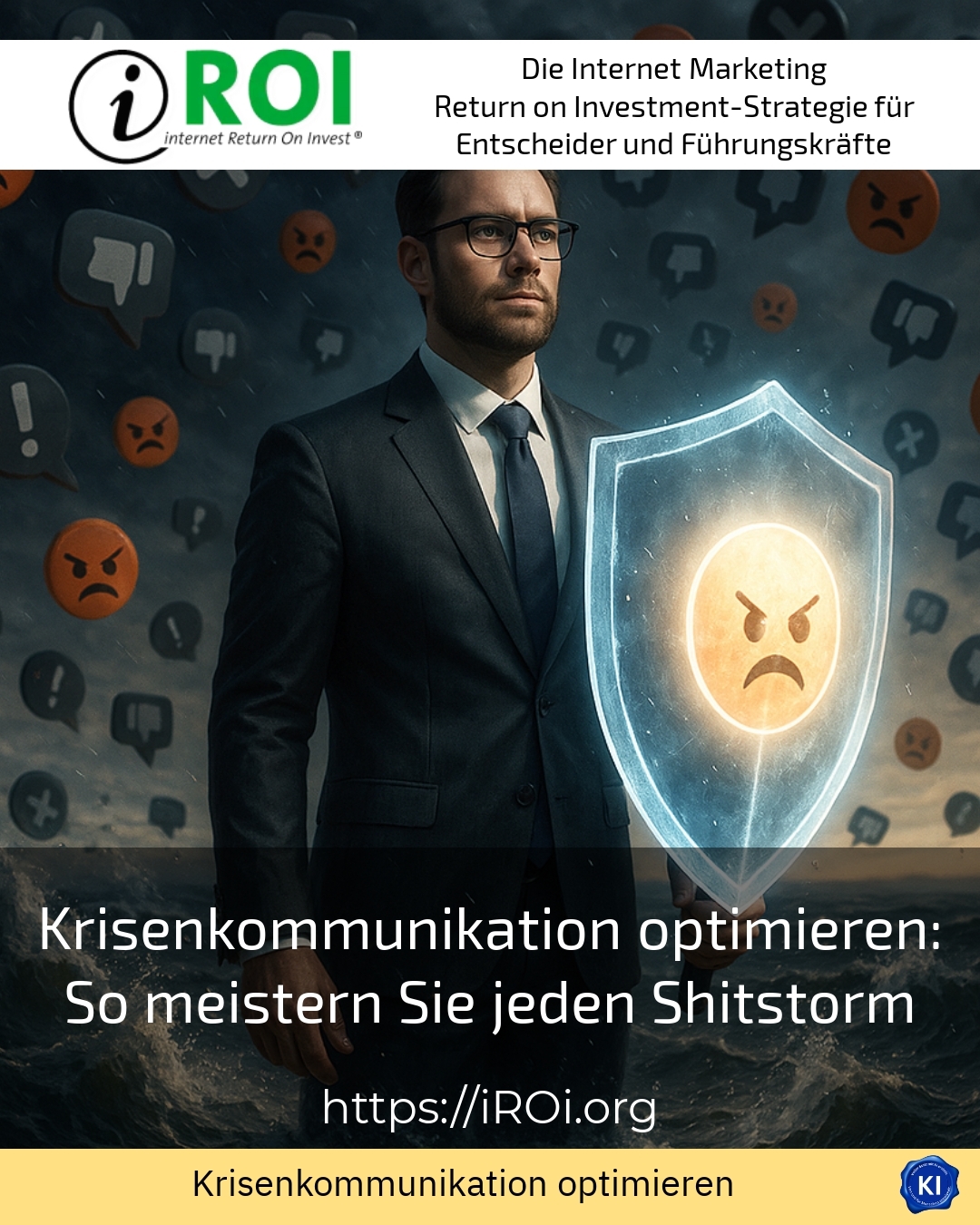In today's fast-moving media landscape, it is essential to be able to optimise crisis communication in order to manage shitstorms and other crisis situations in a targeted manner. Companies often report how important a quick, clear and empathetic response is in order to limit the damage to reputation and trust. This article provides valuable ideas and practical examples to help you take your crisis communication to a new level.
Optimise crisis communication: How to be well prepared
Good preparation is the basis for not reacting unprepared in the event of a shitstorm. Many companies from a wide range of sectors, such as the food industry or mechanical engineering, report that a detailed crisis communication plan is a decisive advantage. This allows responsibilities to be clearly allocated, communication channels to be clearly defined and possible scenarios to be anticipated.
Example from the automotive industry: A supplier suddenly received accusations regarding faulty components. Thanks to a prepared communication plan, the company was able to quickly take a stand and disclose a transparent error analysis. The co-operative attitude supported credibility and reassured the public.
Sudden calls for boycotts are not uncommon in the fashion industry either. One well-known manufacturer responded with a proactive social media campaign that emphasised sustainable production conditions. The early and empathetic communication helped to defuse the escalating discussion.
In the IT sector, on the other hand, data protection incidents are particularly critical. One software company has established an internal crisis team that immediately sounds the alarm and launches a coordinated communication strategy when warning signals are signalled. Such measures are important building blocks for overcoming crises.
Best practice: crisis responses that strengthen trust
BEST PRACTICE with one customer (name hidden due to NDA contract)
The company was confronted with a sudden user complaint about faulty product batches. By communicating quickly and openly, including regular updates via email and social media, customer confidence was maintained. Transparent insight into the corrective actions was also provided to prevent a recurrence.
Transparency and active communication are key elements, as the example from the beverage industry shows: Following an incident involving tampered products, the manufacturer published comprehensive material and evidence proving tampering. This enabled the company to regain control of the situation and defuse the shitstorm.
Dealing with misinformation is particularly challenging in the healthcare sector. Clinics that deal openly with errors and communicate empathetically at the same time report better understanding, even in difficult cases.
Optimise crisis communication by acting quickly and empathetically
When a crisis is brewing, speed is of the essence. Many companies report that an immediate response often makes the difference between a shitstorm being contained or turning into a conflagration. An empathetic approach should always be taken in order to reach the people affected and the public.
Practical examples, for example from the service sector, illustrate this: an IT support provider responded to a malfunction within a few hours by transparently explaining the causes and pointing out specific steps to a solution. This open communication led to customers showing understanding and the criticism quickly died down.
While a product recall in the food industry can be a delicate situation, careful public relations, including a recall hotline and FAQ pages, can strengthen customer loyalty despite the incident.
In the media sector, too, editorial teams report how important it is not to play down mistakes but to communicate openly and consistently in order to secure the trust of the readership.
Use communication channels effectively
Another important step in optimising crisis communication is the targeted use of different channels. Companies from different sectors use websites, social media, press releases and internal newsletters to deliver their messages in a customised way.
Example from the automotive sector: While social media enables direct interaction with customers, detailed background information is published on the website. This allows different target groups to be served and information requirements to be met.
Mobile notifications and emails are also combined in retail to reach customers quickly and avoid queries.
In the education sector, online platforms show how comprehensive updates are guaranteed for students and employees alike. This multi-channel strategy contributes significantly to making communication coherent and credible.
My analysis
Practical experience clearly shows that optimising crisis communication is not only successful through theoretical concepts, but above all through forward-looking planning, quick action and an empathetic approach. Companies from a wide range of industries benefit from clearly structured crisis plans, transparent communication measures and careful channel selection.
Especially in times of shitstorms, it is crucial not to relinquish control of the interpretation, but to communicate actively and openly. The combination of preparation, rapid response and the right tone of voice strengthens the reputation and trust of stakeholders in the long term.
Further links from the text above:
bc.works - Checklist: The 10 most important points for effective crisis communication
safeREACH - 2 examples of successful crisis communication
für-Gründer.de - Crisis communication for founders: examples, strategies & tips
tixxt - Examples of good crisis communication
Mittelstandsbund - Checklist for a crisis communication strategy
bc.works - Successful crisis communication: companies take note!
Ministry of the Interior Baden-Württemberg - Crisis communication
Mobile University - Crisis communication in organisations: Planning strategies
For more information and if you have any questions, please contact Contact us or read more blog posts on the topic internet Return on Investment - Marketing here.
















